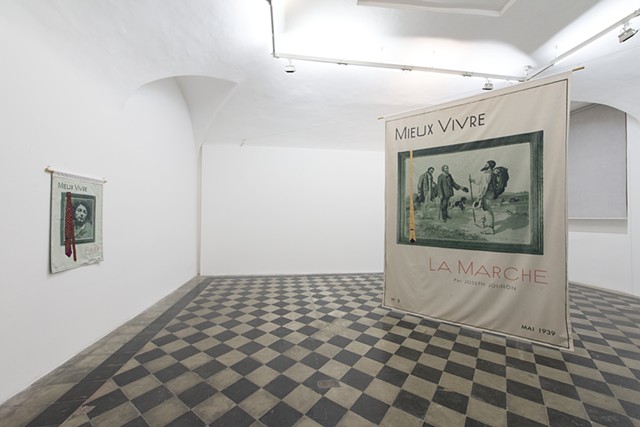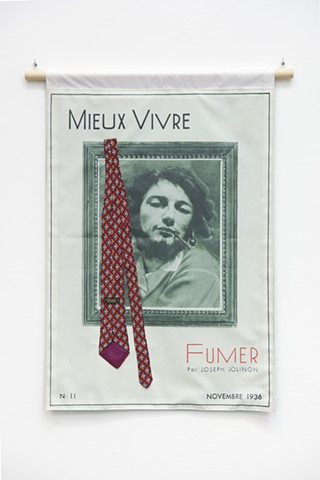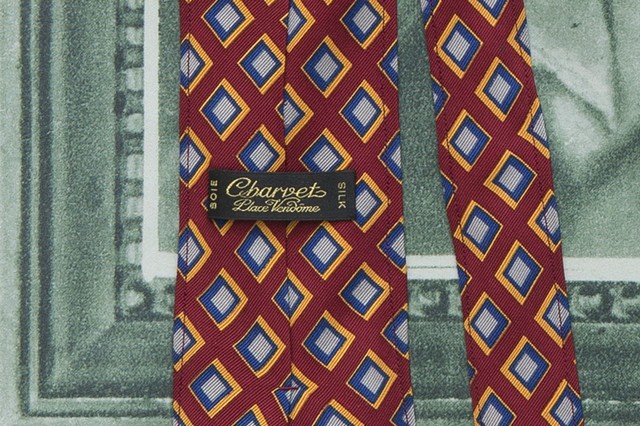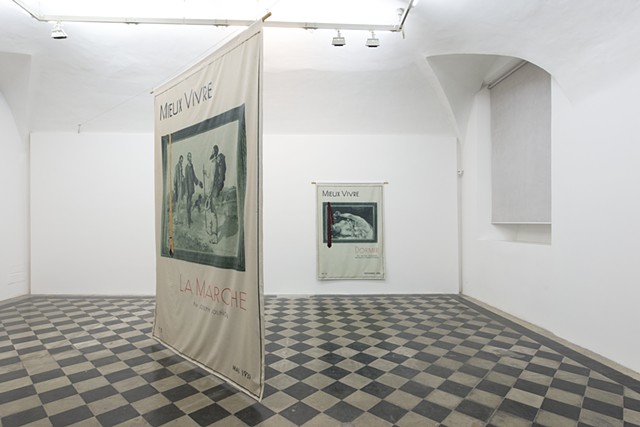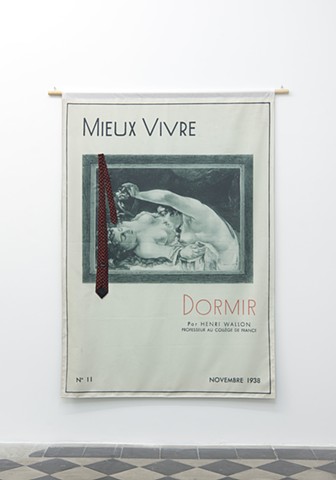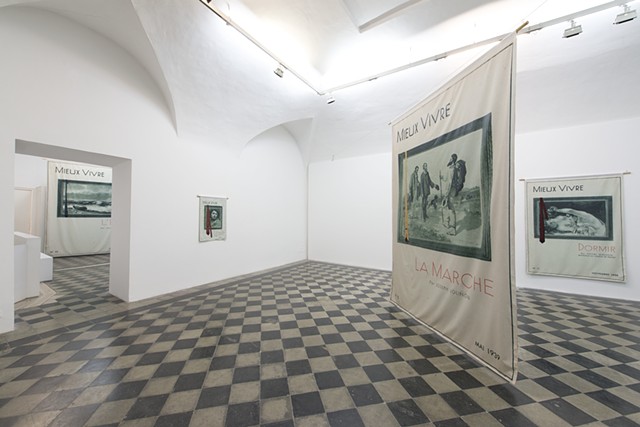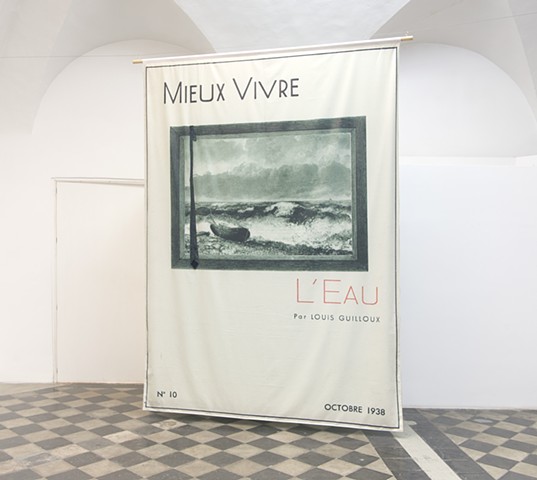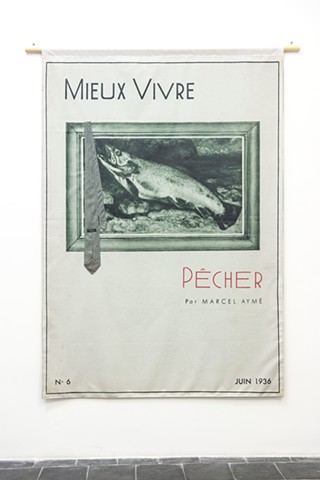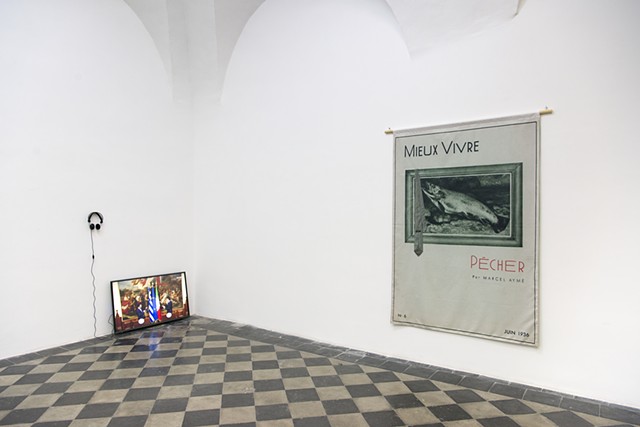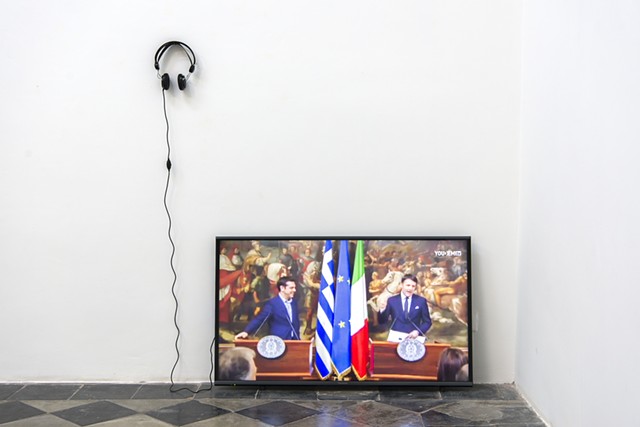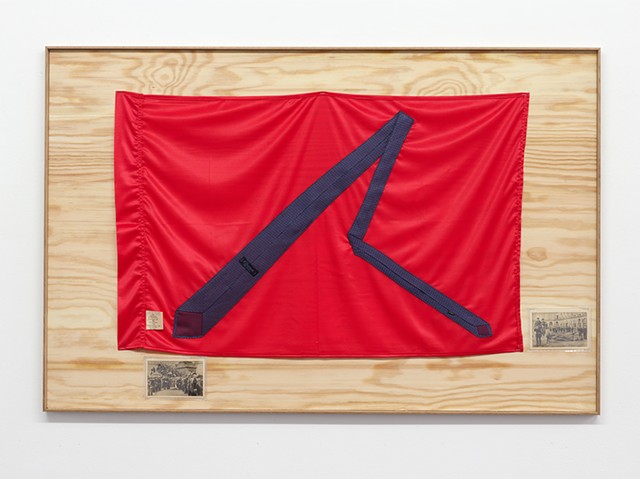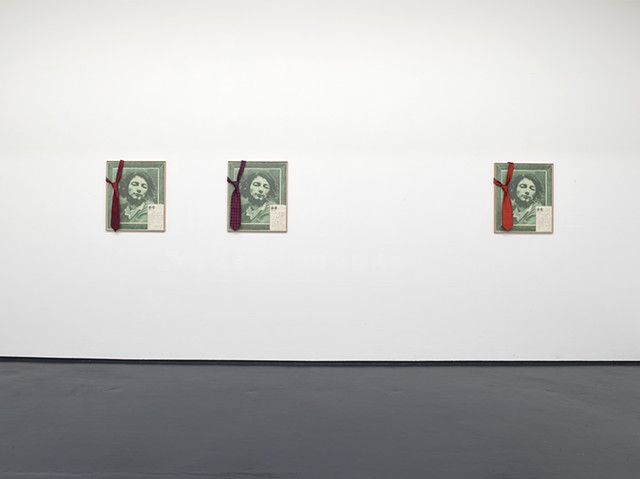Before the War
Action speaks louder than art.
At the core of Norwegian artist Per-Oskar Leu’s practice lies an interest in failed revolutions and righteous battles that were lost, often seen through the work of historical figures such as the Marxist playwright Bertolt Brecht, the “Cosmic Communist” painter Otto Freundlich, or the 19th century painter-turned-political activist Gustave Courbet.
Leu’s third solo exhibition at 1/9 unosunove, titled Before the War, takes as a point of departure the French magazine Mieux Vivre, which was published monthly between 1936 and 1939. Mieux Vivre (“Better Living”) was a booklet-sized PR tool created by a pharmaceutical company, each issue containing a written essay accompanied by themed black-and-white photographs by some of the most renowned photographers of the day. More important to Leu, pictured on the cover of each issue was a framed painting by various artists, corresponding to the topic at hand, and flattened into monochromatic shades of green.
Presented in the exhibition are five magazine covers from the Mieux Vivre back catalogue, each containing a painting by Gustave Courbet. Images of the covers are printed on textiles in various dimensions so that the image of each painting corresponds with the dimensions of the original canvas. Attached to each textile is a silk necktie from the high-end shirt maker and tailor Charvet, affixed so that the manufacturer’s logo on the backside of each tie is facing the viewer, precisely covering Courbet’s painted signature.
Charvet is the oldest shirt maker in France, with a lineage stretching back to the court of Napoleon. In 1877, the year of Courbet’s death in impoverished exile, Charvet moved its headquarters to the Place Vendôme in Paris, where it still resides among other luxury boutiques today. For Leu, Charvet’s store at the Place Vendôme, and the invention of the necktie as a men’s fashion for the burgeoning bourgeoisie in the 1860s is seen in relation to the dramatic incidents at this very same Paris square during the events of the Paris Commune in 1871. On 16 May the revolutionary Communards – following up a suggestion of Courbet the year before – pulled down and destroyed the column erected by Napoleon I to honour the victories of the French Army. In the violent aftermath of the Commune, Courbet was both sentenced to prison, and required to cover the costs of the rebuilding of the Vendôme column, which eventually led to the painter’s self imposed exile in Switzerland until his death a few years later.
The Charvet ties, mounted vertically onto the Courbet/Mieux Vivre textile prints, are visual stand-ins for the Vendôme column, and simultaneously proposed as banners of the winning side in the struggle between capitalism and socialism. Courbet himself was torn between political idealism, and the expectations of the emerging art market of his time. Before the War is a work of mourning – in memoriam of lost battles of the political left, and a lament over the seeming impossibility of escaping the quagmire of capitalism – and at the same time a search for a legitimate artistic strategy in times of social upheaval.
–Arve Rød
